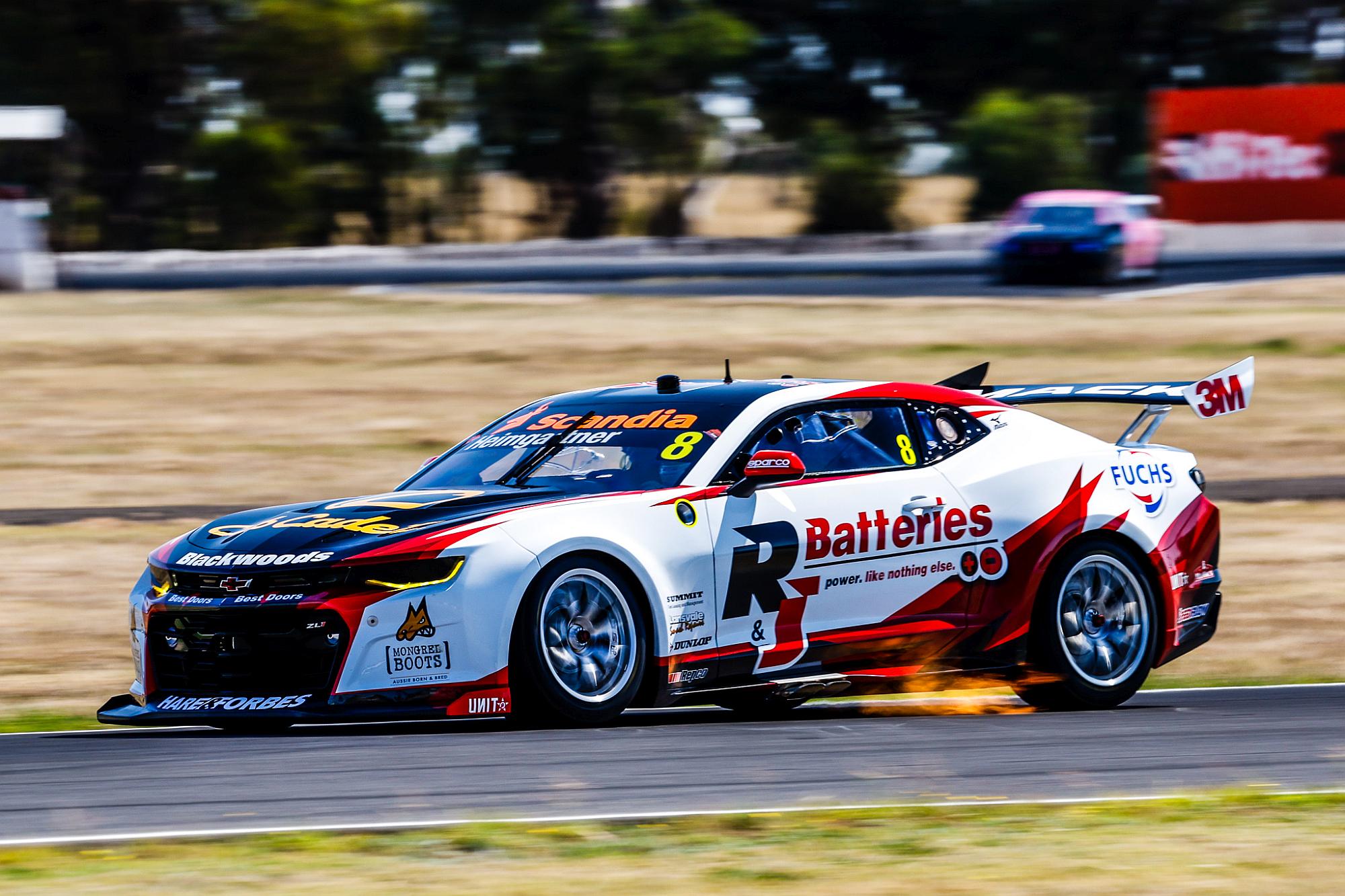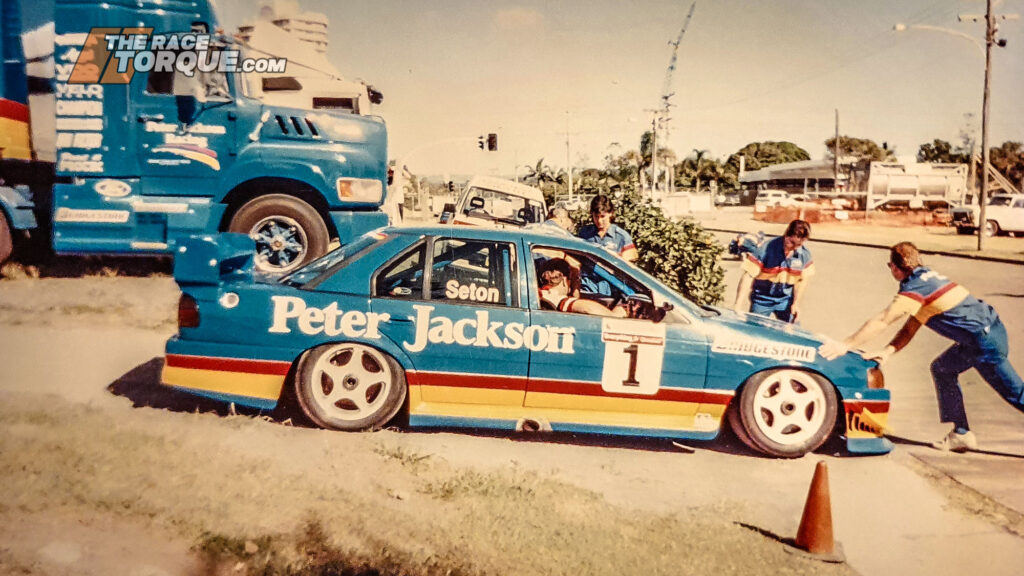Gen3: What it Really Means

The new for 2023 Gen3 Supercars platform has been the talk of motorsport circles for years, but what is all of the fuss about?
Here we break down what’s changing and what’s staying the same, as the latest Supercars ruleset hits the streets of Newcastle on March 10th.



Where we’ve come from
Born at a time when interest in top-flight touring car racing in the country waned under international Group A regulations, the first of the 5 Litre Touring Cars took to the circuits of Australia in late 1992.
The original examples were very much road car derived, some actually being converted ex-passenger vehicles, the EB Falcons all freshly built to the rules, while the VP Commodores were either new builds or former Group A VN Commodores upgraded with body kits.
As time passed, each successive model became more refined and professional – the EB converted into the EB II, and subsequently the EF and EL, with the AU and BA models forcing all new builds with its altered floorplan configurations.
From the Commodore camp, the VPs could convert into the VR and VS, with the new VT model transforming into the VX.
The first major revolution of the V8 Supercars rules came in 2003, with the instigation of Project Blueprint.
With parity politics at the heart of the ongoing Holden versus Ford war, the initiative saw many of the differences between the two marques equalised, a topic which was hammered home in 2007 with the debut of the VE Commodore, which was cut and shut to ensure the same dimensions as the BF Falcon.
The evolution of the cars continued with the instigation of sequential shifters in 2008, and E85 fuel in 2009, the same year that soft compound tyres were introduced.
By the middle of 2008, the future direction of the sport came under the spotlight, which ultimately faced starter’s orders in 2013 with the Car of the Future era, the biggest shift in the 21 years of the category to that point.
A raft of safety improvements were made, a spec chassis and a rear transaxle were introduced, the wheels grew to have 18-inch diameters, with the changes paving the way for new entries, which came in the form of Nissan, Mercedes-AMG and Volvo.
The next step taken by the category was to investigate the possibility for two-door coupe configurations, coupled with turbocharged four or six-cylinder powerplants.
Holden went a considerable way down the turbo path, with its example tested in public, although never making it to race day, while the two-door format saw reality when the scrapped Ford Falcon was replaced with the Blue Oval’s hero sportscar, the Mustang.
However, the car’s proportions never looked right when draped over the roll cage essentially designed around the much earlier Falcon family saloon.
When Holden ceased in 2020, the very real need for a replacement formula hit home.

Gen3
Officially launched to the public at Bathurst in December 2021, the Gen3 ruleset sees the top-tier return of the Pony Car wars to these shores, with the Ford Mustang set to take on the Chevrolet Camaro.
After often lopsided confrontations in the late 1960s, the Mustang versus Camaro battle came to life in the 1971 Australian Touring Car Championship, with Bob Jane giving the Bowtie honours following a torrid title fight with Allan Moffat’s legendary Trans Am Mustang.
The Mustang is notable for being the first version of the new for 2023 S560 model to hit the racetrack anywhere in the world, with the shape set to be the spearhead for the marque across a broad cross-section of motorsport categories, including GT3 and GT4 in all of its global competitions, including Le Mans and Daytona, plus NASCAR, NHRA drag racing and more.
The Supercar battle resumes this year with a breed of car that is far more representative of the available passenger vehicle models – the DNA from the road is clearly distinguishable in the lines of the panels hanging from the duo.
And those aesthetics are the basis of one of the major underlying features of the new designs: a targeted 50 to 70 per cent decrease in downforce, which has been achieved via a smaller rear wing and missing in action front undertray.
The cars are wider by the same amount they are lower, with this, in turn, bringing down the platform’s centre of gravity, providing more mechanical grip.
What does that mean?
Firstly, the cars will be harder to drive, the drivers will be more prone to mistakes, and those mistakes give rise to the possibility of greater overtaking opportunities.
Secondly, by relying less on aerodynamics, in theory at least, cars should be capable of following the car ahead closer, for longer.
Typically, with the previous generation of Mustang and ZB Commodore, if you got near the car ahead, the turbulence would impede the effectiveness of your car’s grip, placing more demands on the tyres, which would overheat, and subsequently lose you ground.
Less aerodynamic grip means that the cars should be slower in high-speed corners, but the low rooflines and sleek silhouettes should be quick on the straights.
From testing, drivers have reported that they have been burning through their rear tyres much quicker than in the past – therefore, prolonging tyre life will be a crucial skill set for the pilots to master.
The cars are lighter, which coupled with the aero tweaks, will see softer compound tyres utilised at events, which should spice up the action.

Under the bonnet, it is all change, with the 5-litre pushrod V8 architecture that has served the category for 31 years sent off to stud.
The Mustang features a 5.4-litre dual overhead cam engine based on the Coyote V8, as derived from the road car, while the Camaro has a 5.7-litre LTR, which results from various GM Performance products.
The design of the Ford resulted in a heavier and more cumbersome package, an issue that came to a head on the recent Sydney Motorsport Park test day.
Alongside bringing many different aspects of the cars into control specifications in the name of parity, engines are supplied via a random allocation from lone suppliers – Herrod Performance on the Ford side and KRE on the Chevy.
Overall, power is down, but so too is cost, while service intervals should be extended.
The engine exhaust point has been tweaked, which with the new fuel blend and engine combination, has proven a return to the fire-breathing days of old.
The cars should be safer too, with continued refinement, including moving the driver further inboard towards the car’s centre.
Of the spec components, the front suspension layout is now a control component, an area that remained up until this year, the domain of each team’s own IP, and largely their competitive advantage.
By removing development freedoms from the team’s engineering kit, the theory is that the field should be closer, however, adjustability across numerous systems means that setups for each individual driver will remain important.
The offsets on the wheels have altered, with an aim of eliminating the chance for the spindles to come into contact, while smaller wheel nuts have also been employed, which in turn require less torque to fasten.
The wheel nuts have been an issue in early testing, although the teams are banding together with Supercars to develop a solution.
The Xtrax transaxle transmission, dampers and rear suspension are carried over from the older generation machines, while sequential shifting has been maintained over paddle changes.
Repairability is also core to the redesign. Detachable front and rear clips make many major incident repairs more easily achievable, with many more subtle touches around the cars resulting from years of learning and backroom brainstorming.
With an eye to the future, the platform is ready to accept hybrid engine architecture, while Supercars has stated that it is open for further manufacturers to sign up for the series and adapt to the platform.
What does this all mean?
Hopefully, it will be a rules package that importantly ticks boxes from a race team perspective, but also, puts on a heck of an on-track spectacle.







